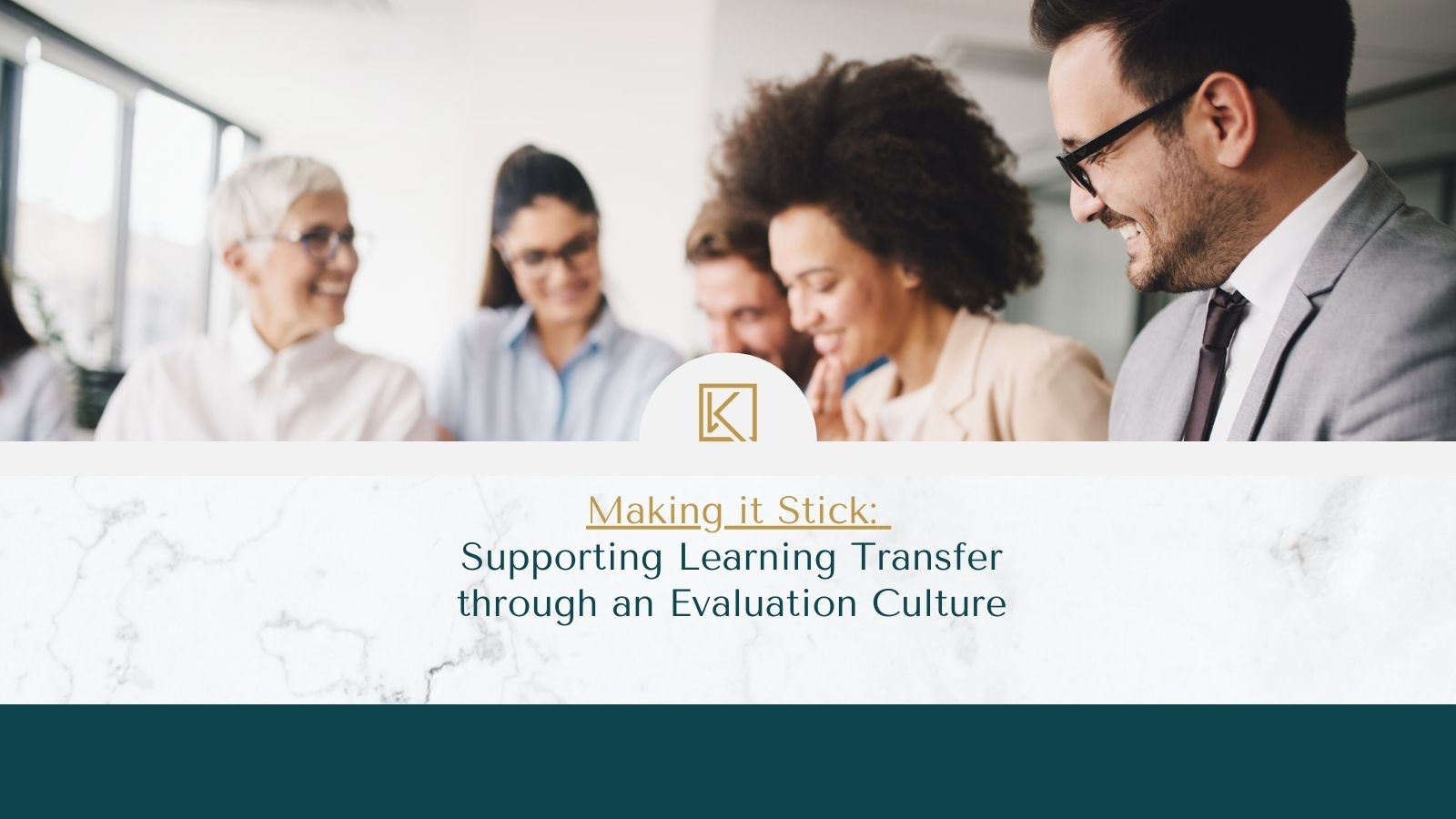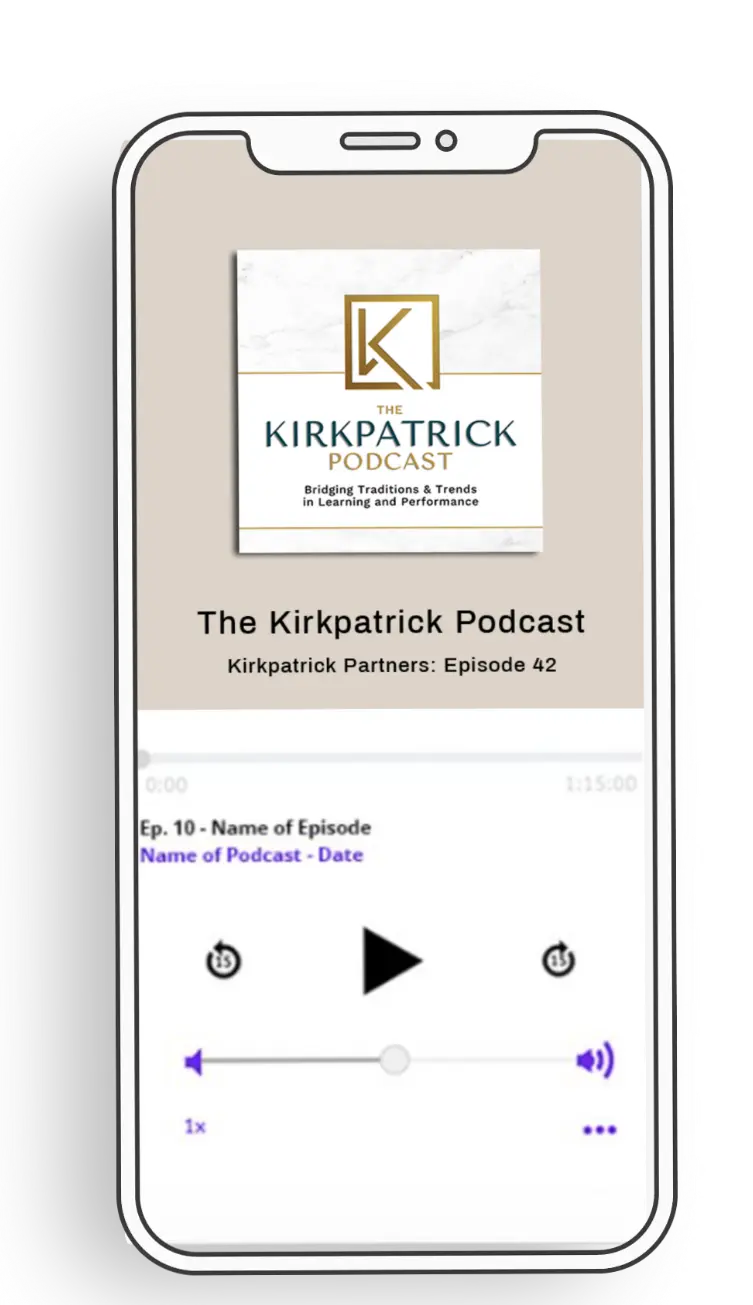Making it Stick: Supporting Learning Transfer through an Evaluation Culture

As learning professionals, our goal isn’t just to deliver information. We have to ensure that participants can effectively apply what they’ve learned in their day-to-day roles. This “transfer” is key to the success of any learning initiative. This week, we’ll take a closer look at the crucial elements of creating a culture that fosters learning transfer, as well as the role of leadership in becoming learning advocates and supporting learners holistically.
It’s Not Just About Great Training Design
A carefully crafted training program is like the spark that ignites the learning flame. Yet, the fire doesn’t fizzle out after the session ends. It’s not about finding a one-size-fits-all solution for everyone to absorb and apply knowledge. We have to think bigger. As learning professionals, we’re not just designers and facilitators. We have to become transfer enablers.
For learning to truly stick, we have to zoom out and see the big picture surrounding the learning experience. This includes post-training support, ongoing resources, and a community that focuses on sharing knowledge and putting it into action. It’s time to stop treating learning as a one-time event and start weaving it into the fabric of our organizational culture.
Transfer Requires an Evaluation Culture
Building a culture that supports learning transfer starts with setting up a solid evaluation framework. This means standardizing processes, getting leadership backing for follow-up initiatives, and putting easy tracking methods in place. Going from a one-time event to a continuous process of improvement and evaluation is where the real “stickiness” of learning occurs.
An evaluation culture encourages accountability and creates a feedback loop that allows organizations to improve their learning strategies. It’s not just about grading the training on its effectiveness. It means diving into how well we’re applying that knowledge in the real world. This shift toward ongoing evaluation creates an atmosphere where learning transfer thrives.
Fostering Continuous Learning Opportunities
As we work toward greater learning transfer, we have to recognize that knowledge acquisition is an ongoing journey. The traditional model of a one-time training event might not cut it in today’s fast-paced work environment. To truly weave learning into the organizational fabric, learning professionals need to champion continuous learning opportunities.
This involves setting up pathways for learners to regularly tap into relevant information, stay in the loop with updates, and access resources to build their skills. Harnessing the power of technology through microlearning, virtual workshops, and online communities is a savvy move to sustain the energy sparked during formal training sessions. Embracing this continuous learning mindset isn’t just about holding onto knowledge; it’s about empowering employees to gracefully navigate shifting circumstances and stay ahead of emerging trends.
Leadership as Learning Advocates
A key part of making learning stick is getting leaders on board and actively involved. Leadership takes center stage in setting the tone around learning as a top-tier priority. It’s not just about leaders giving a thumbs-up to training efforts; they need to roll up their sleeves and showcase how much they value continuous development. Leading by example and walking the talk is the best way to foster ongoing growth.
When leaders wholeheartedly support learning, it creates a team spirit around learning transfer. Employees see it as a joint venture where everyone plays a part. When leaders dive in, it sends a message loud and clear: we’re all in this together for continuous improvement. Cultivating a leadership culture that embraces learning sets the stage for long-term learning transfer and, as a bonus, lasting shifts in behavior.
Support Learners Holistically
Valuing each participant as a unique individual with specific needs and motivations is a key ingredient for successful learning transfer. It’s time to move beyond the generic learning playbook and really dig into what makes each person tick – their performance preferences, action preferences, and motivations. Offering personalized support and follow-up initiatives becomes crucial in driving home the message that success comes from putting that knowledge into action in real-world situations.
Customizing our support for each individual is our way of recognizing diverse learning styles and preferences. This all-encompassing approach nurtures a feeling of ownership among participants, boosting the likelihood that they’ll put their newfound knowledge into action. This in turn creates a vibe where everyone contributes to a culture of ongoing improvement in a friendly and professional manner.
Making learning stick isn’t just about whipping up a top-notch training program. As learning professionals, our job is to make transfer happen, and that calls for a holistic approach. By expanding our role from mere designers to enablers, cultivating an evaluation culture, and providing individual support, we unlock a formula that makes learning stick and sparks real behavior change.
Ready to learn more? Check out the latest episode of The Kirkpatrick Podcast, where learning strategist and development expert Melanie Martinelli joins Vanessa Alzate and Jim Kirkpatrick to talk about how to build a culture of evaluation. It’s a must-listen for anyone looking for guidance and practical insights on navigating the business world as a flexible and innovative leader.
Listen or watch the latest episode here:
Keep in mind, the real magic happens when we refine our approach to training and see tangible results. By fostering a culture of trust, engagement, and ongoing improvement, we boost the chances of success for our training programs.
Looking for a crash course in the Kirkpatrick Model? Check out the Kirkpatrick Evaluation Toolkit, your ultimate guide for efficient and effective evaluation. Learn more here!





